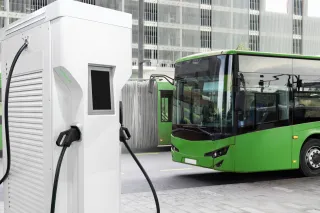Automated driving can offer safer, cost-efficient and sustainable solutions to transportation needs in remote locations, extreme weather conditions and situations where it’s simply not necessary to have people sitting behind the wheel. Humans are great at problem solving and creative thinking but perform poorly at repetitive tasks – let’s focus on what we do best and let automation take care of the rest.
Automated driving is a thing of today
While visionaries have dreamed up self-driving cars since the 1920’s, the technology is now catching up and making it possible to turn those dreams into reality. Thanks to trend-setters like Google and Tesla, automated driving has entered the public consciousness in a big way in the past ten years.
“Electronics and software are the thing that creates value in cars these days, not the mechanical parts,” says Pertti Peussa, Principal Scientist at VTT.
Automated driving can offer a helping hand in making a business more profitable and sustainable. It can also make work safer and more efficient by enabling self-driving vehicles to handle transportation in remote locations and challenging weather conditions. Good applications for automated driving include factories, production sites, and last-mile solutions at airports and suburbs, where routes are repetitive and basically require no human problem solving to get the job done.
And there’s never been a better time to get involved – the interest around automated driving has meant increases in funding for research and development, which in turn has accelerated the progress of technology and brought new players into the field. Those interested in utilising self-driving vehicles in their operations have more options to choose from than ever; it’s become a matter of finding the right solution for your needs.
More efficient, meaningful work
Until now, transporting goods and people from A to B has required someone to be at the wheel, braving repetitive work shifts and at times poor driving conditions. Automation can bring much-needed relief here, allowing people to focus on tasks that really require a human to tackle them.
The Stora Enso-operated Uimaharju mill in Joensuu has been experimenting with an automated truck that transports wood chips from the sawmill to the pulp mill. “This frees up the driver’s time for other, more complex and supervisory tasks,” explains Peussa. Automation also makes the repetitive truck journey safer by eliminating the element of human error, and more environmentally friendly by fuel-economical driving and route selection.
Finding the right solution for you
With a whole host of automated and autonomous driving solutions to choose from, it can be hard to figure out what the next step should be for your specific needs. VTT is an independent, impartial institution dedicated to long-term research and development, and offer their expertise in the field of automatic vehicles to clients at all stages of their automation journey.
“Automated driving being still such a novel thing, many of our clients had a hard time figuring out where to get started,” says Matti Kutila, Research Team Leader at VTT. “We came up with an offering that helps them begin their journey and ask the right questions.”
Once you have figured out what your needs are, the next step is finding a solution that fits them. “We can help our clients take a quick and easy first step towards automated driving with our services,” says Peussa. “By prototyping what changes would need to be made to the client’s existing vehicles, we can offer companies that first spark of hey, this actually works.” This allows companies to try things out before committing to big purchases or getting locked into a particular technology.
Developed and tested in the changeable Finnish weather, VTT RobotDrive software pool offers robust, proven solutions for operating in remote locations and harsh Arctic conditions. VTT RobotDrive enables better, more reliable automated driving and in many cases can complement your existing technology, so there’s no need to start over completely.
If you’re further along in your automation journey, VTT’s experts can provide validation, safety analysis and impartial assessment documentation to help you to get your prototype accepted by your customer, or approved by authority.
“We are an impartial organisation with no ties to any particular car manufacturers or contractors,” says Kutila. “However, we’re happy to collaborate with everyone, and we have great networks all over Europe thanks to co-funded projects we’ve been a part of.”
Where will your journey take you?
Automated driving is what’s next in sustainable, profitable transportation. Whether your automation journey is already well underway, or you are still figuring out your roadmap for getting started, the right solutions are waiting out there. There are plenty of benefits to be reaped from automation, from the safety of workers to the efficiency of your operation.
If you need a partner along the way, VTT’s experts are at your disposal to help you make the right decisions or even build the right solutions with you.





